Paradise Coast is one of the most beautiful coasts in the Sunshine State of Florida with year round fun in the sun, but how can you visit safely these days without the crowds and yet still experience this laid back Florida hotspot?
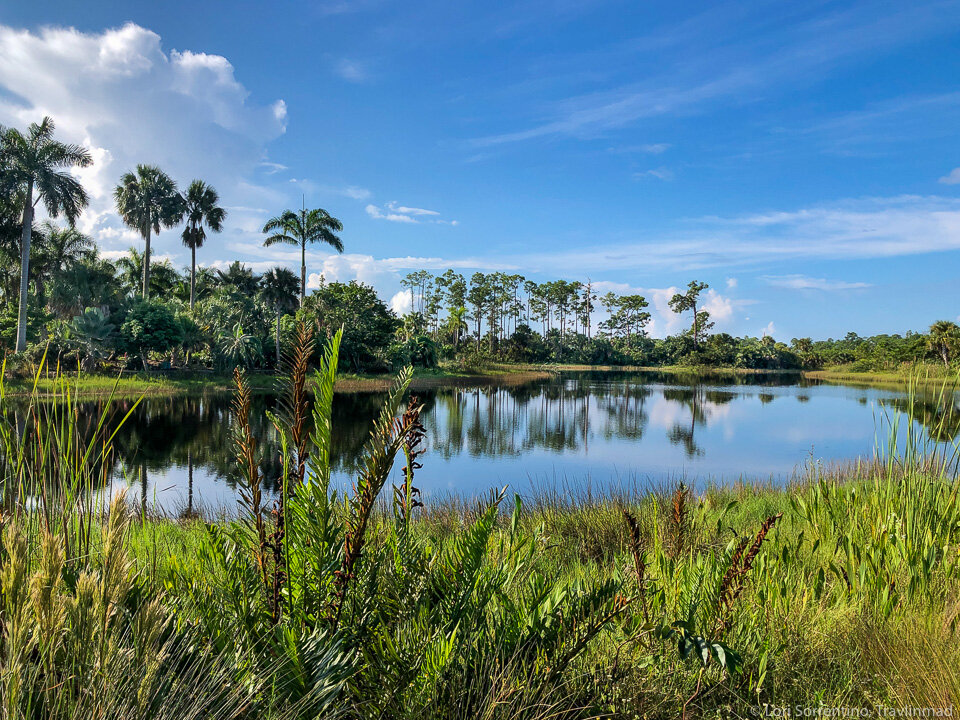
In the midst of missing family and friends, our social-distancing and overall isolation was pleasantly interrupted recently by an offer from our tourism folks to check out some local gems in our own backyard at a time when most of us still aren’t sure what to do, what to believe, and where we can safely travel to, if any place at all.
Where is the Paradise Coast?
You may know the Paradise Coast in southwest Florida for the two cities that comprise this slice of paradise — Naples and Marco Island — whose affluent reputations belie the remote location they enjoy as the western gateway to the Florida Everglades, the vast watery wilderness that makes up the bulk of south Florida.
Its 30 miles of soft, white Gulf Coast beaches are perhaps the biggest draw, or maybe it’s the dizzying array of great restaurants from which to choose.
On second thought, the shopping is pretty fantastic too, and there’s always some cultural event or outdoor festival happening since, well, the sun shines year round. One thing is true — you’ll never be at a loss for exceptional things to do in Naples and Marco Island.
While we travel often for a living, we’re year round residents of Naples when we’re not on the road, though our travel this year has been limited to seeing new parts of Florida and more of our own backyard — bonus!
But if you’re like us and still laying low but that gnawing wanderlust persists and your hunger to travel needs to be satisfied — there are some amazing places on the Paradise Coast you can visit safely, and in some cases, practically alone. Which is perfect if you’re keen to see the less-traveled parts, the quieter trails, and the hidden gems, like any slow traveler. So come slow travel the Paradise Coast with us and see the natural side of southwest Florida we love most!
Where to Slow Travel the Paradise Coast
1. Rookery Bay
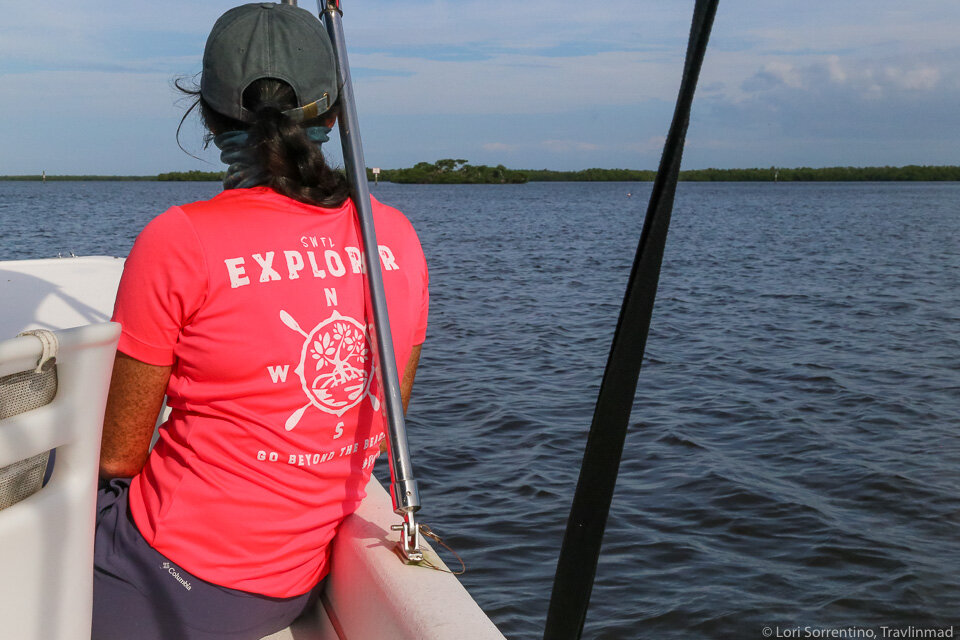
Rookery Bay National Estuarine Research Reserve encompasses 110,000 acres stretching from Gordon Pass in Naples to the western Everglades and includes 36,000 acres of mangroves. It’s one of the few remaining undisturbed mangrove estuaries in all of North America.
The Bay is so named for the number of seasonal birds that nest here — the largest nesting site on the entire Gulf Coast — including kestrels, wading birds, sea birds, herons, frigate birds, ospreys, woodpeckers, hawks, roseate spoonbills, egrets, ibis, brown pelicans, black vultures, Great horned owls, and the majestic American bald eagle.
The Bay comprises a staggering 40% of the Collier County coastline and provides research opportunities, education, and land and water protection, not to mention an outdoor wonderland for fishermen, kayakers, boaters, campers, shellers, and nature lovers in general.
Two of those nature lovers happen to run incredible eco-tours of Rookery Bay. Ryan and Jeannine Young of Rising Tide Explorers are both well-educated naturalists with an in-depth knowledge of the Rookery Bay ecosystem, and are the only commercial operator who work in partnership with Rookery Bay National Estuarine Research Reserve, Friends of Rookery Bay, and the Florida Department of Environmental Protection giving them full access to areas of the bay not open to public.
If you want to see the backwaters and mangroves of Rookery Bay by boat, these two can get you there.
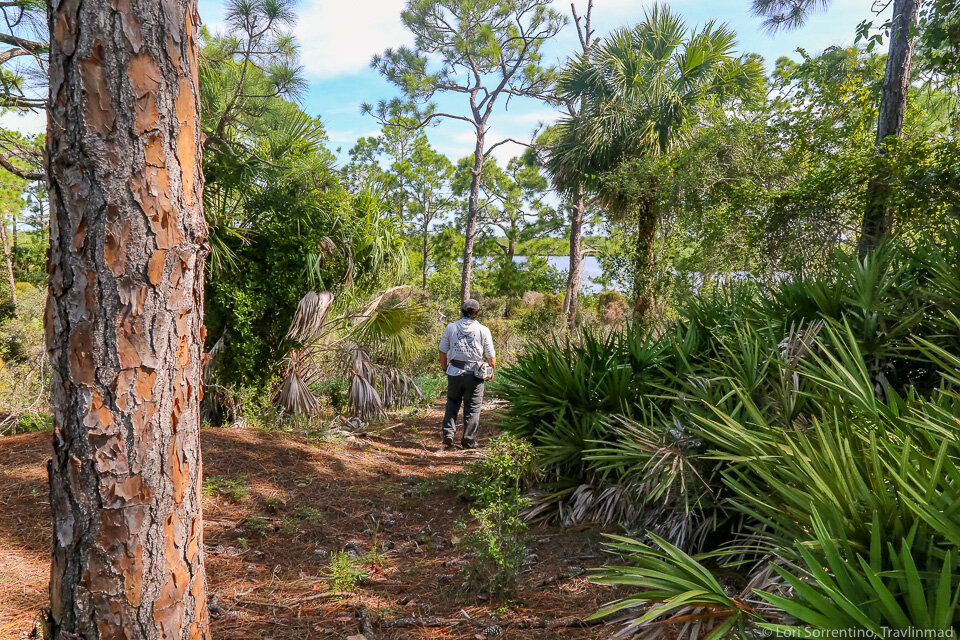
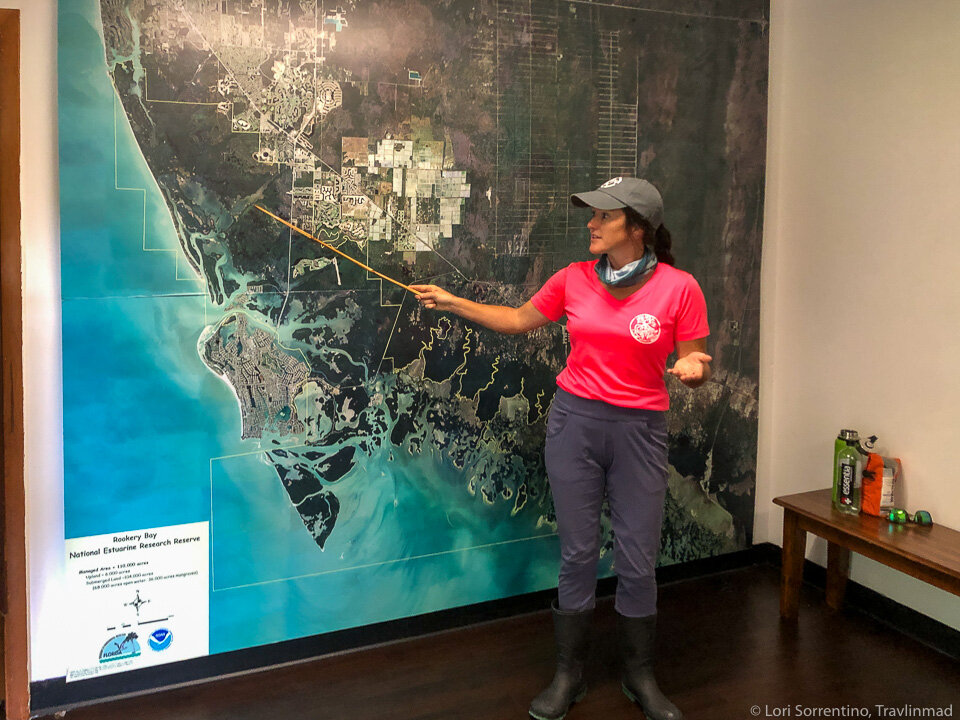

We got to know Ryan a few years ago on one of his early kayak tours through the Bay, and were super-impressed with his classroom approach. Like class with your favorite high school Bio teacher, his tour was our favorite period of the day.
So we were excited to experience his new boat tour on a 24’ Carolina Skiff that would have seated more than just us and the two others on our tour. It was great that we had plenty of room to maintain good social-distancing.
Ryan and his wife Jeannine run several unique tours of Rookery Bay: Essence of the Estuary Eco-Cruise, Life’s a Beach: Shelling and Barrier Island Beach Combing on Keewaydin Island, and the High Points Ancient Island Tour among others. Our tour was to the High Points Ancient Island, a part of SWFL I never knew was there.
The tide was low on our way out to High Points, a remote spot not accessible to the general public. At 24’ above sea level, it’s the highest point in the region! A steep hill in SWFL — how cool is that!
The water in Rookery Bay was shallow in places exposing lots of oyster beds, so we had to go slow.
“Oysters are a keystone species that filter 30-50 gallons of water a day and create small islands where mangroves can take hold — establishing a nesting place for birds and an underwater nursery for a variety of fish. ”
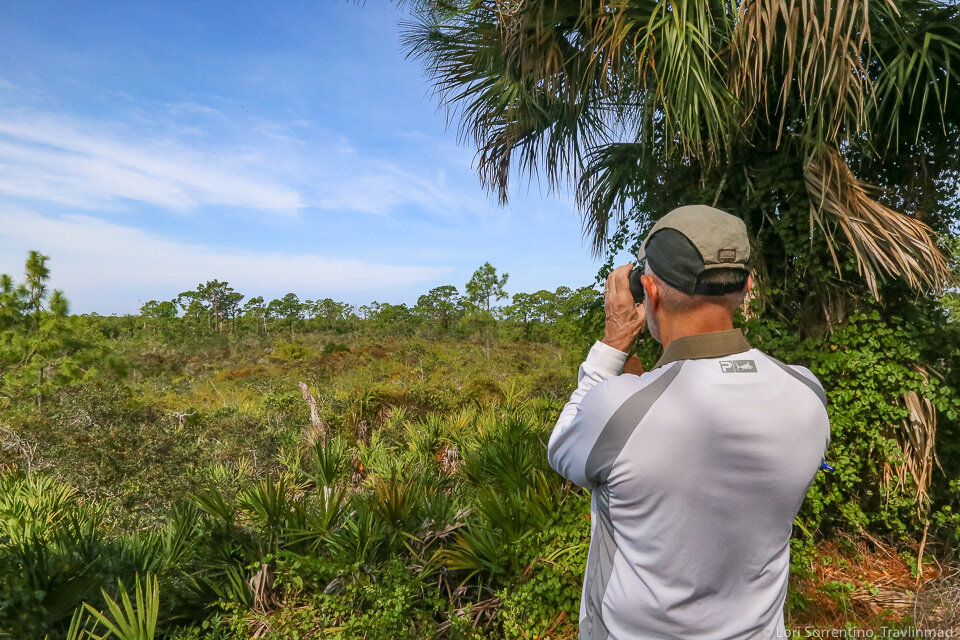
The incredible view over High Point
As a tribute to the oyster-driven mangrove islands, a record number of birds — 1,300 — were recently observed nesting on a single mangrove island. On the way out we saw a mature bald eagle high in a snag looking back at us as if we were prey. Turns out that this area has the largest population of nesting bald eagles outside of Alaska.
We arrived at Sand Hill to hike up to “High Point”, joking that we might all get nose bleeds at such a height. This protected area is closed to the general public, but Rising Tide’s partnership allows them to bring small groups for a quick education. The sandy path leads almost straight up to the top of a mound with an unbelievable variety of native plants along the way. At the top, a stone monument placed via helicopter marks the high point of the island.
From the 24 foot summit there’s an unbelievable panoramic view straight out of Jurassic Park, as if we were the first to ever set foot here.
Interestingly, this is also an ancient archaeological site with a burial site approximately 20,000 years old. Sadly, before scientists could properly excavate the site, any artifacts or remains was destroyed by thieves.
On our way back we passed another interesting marker, the Children’s Monument, put in place to honor the school kids who helped save Rookery Bay from developers!
Overall we think that these guides are incredible for sharing their knowledge in easy to understand language . They are also very personable and ready to answer all questions. Between the two of them they kept us interested and answered all of our questions. We learned a great deal, sometimes more than we could get into our heads. These are really nice people who want to protect the environment by exposing people to it first-hand.
If You Go
Take the High Points Ancient Island Tour with Rising Tide Explorers. Our tour with Rising Tide was just over 3 hours, a perfect amount of time to cover the distance and still observe and learn so much about this vast ecosystem. But next time we’ll wear hiking boots and long pants for the hike up to “High Point”. That aside, we loved this tour and highly recommend it.
What to Bring
Camera and binoculars — you don’t want to miss the icey glare of a bald eagle looking down at you!
Water to hydrate
Snacks
Insect repellant
Cash for gratuity
2. Keewaydin Island
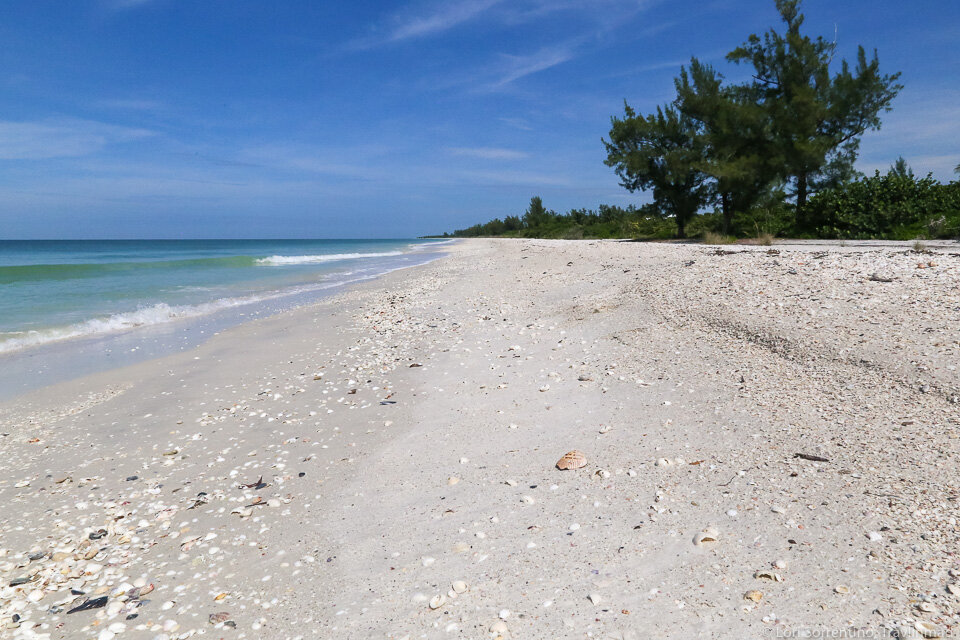
Rising Tide Explorers also runs tours to one of Naples’ most secluded sports — Keewaydin Island, a must-see part of Naples if you’re looking for secluded and rustic beaches.
Keewaydin is a pristine barrier island between Naples and Marco Island with nearly eight miles of untouched white sand beach. This island beach is accessible only by boat, and the only pet-friendly beach in the Naples/Marco Island area.
And if you’re looking for the best shelling on the Paradise Coast, this should be at the top of your list! Sanibel Island isn’t the only island in SWFL with great shelling — because of its unspoiled and inaccessible setting, Keewaydin offers this areas best shelling.
With the same hands-on classroom approach as their other tours, Rising Tide Explorers’ shelling tour on Keewaydin goes well beyond mere beach combing.
You’ll hear about the unique history of Keewaydin, and why this natural island is still pristine thanks to community efforts to curtail massive growth and some forward-thinking development strategy — 80% of the island is undeveloped, and the rest is populated with private homes — and learn about the delicate ecosystem.
We docked on the mangrove side of the island and walked the short distance to the pristine beach on the Gulf side, passing a variety of native plant species along the way. when it comes to local wildlife, Keewaydin is the one beach where nesting sea turtles can often be seen from March through October.
Beautiful, peaceful, and a shell collector’s paradise.

5 minutes of shelling on Keewaydin Island

(clockwise from top) a Banded Tulip, Fighting conch, Pen shell, Shark eye, and Lightning welk
If You Go
Take the Life’s a Beach: Shelling and Barrier Island Beach Combing tour with Rising Tide Explorers
What to Bring
Water shoes that you don’t mind getting wet from launching and unloading
Weather appropriate clothing
Water to hydrate
Sunscreen
Insect repellent is a good idea
Cash for gratuity
3. Big Cypress in the Everglades

The beginning of the Florida Everglades
The Florida Everglades is the largest subtropical wilderness in the United States, and a UNESCO World Heritage Site. The Everglades ecosystem is vast and varied and contains the largest mangrove forest in North America.
Throughout the forest are brackish “lakes” whose waters are a mix of “sweet” fresh water and salt water. This is part of what makes the Everglades — known as the River of Grass — so special.
This is where the Everglades transitions from freshwater to saltwater and it’s an amazing place to experience. It is quite literally a swamp, and exploring it can be daunting for travelers unfamiliar with its unique terrain.
You’ll find hiking in Naples, Big Cypress, and other spots in the Everglades to be along stretches of meandering boardwalks and elevated nature trails, sometimes only walkable in the winter dry months.
Hiking, paddling, and boating are some of the best ways to explore the Glades (but please don’t drive your own boat, the average depth is only around 4-6 feet or less) but our favorite way to glide through the Glades is still on a kayak. Several tour companies offer kayak tours of the Everglades and the Ten-Thousand Islands, including Everglades Area Tours, and we loved our kayak tour guided by naturalist Don McCumber.
Don is a Florida Master Naturalist, an expert kayaker, and an orchid enthusiast, though he referred to these types as “orchid nuts”. That was fine by us — his denial of belonging to such a group only made our discovery all the better! He’s also a whiz when it comes to native plant species and any medicinal properties.
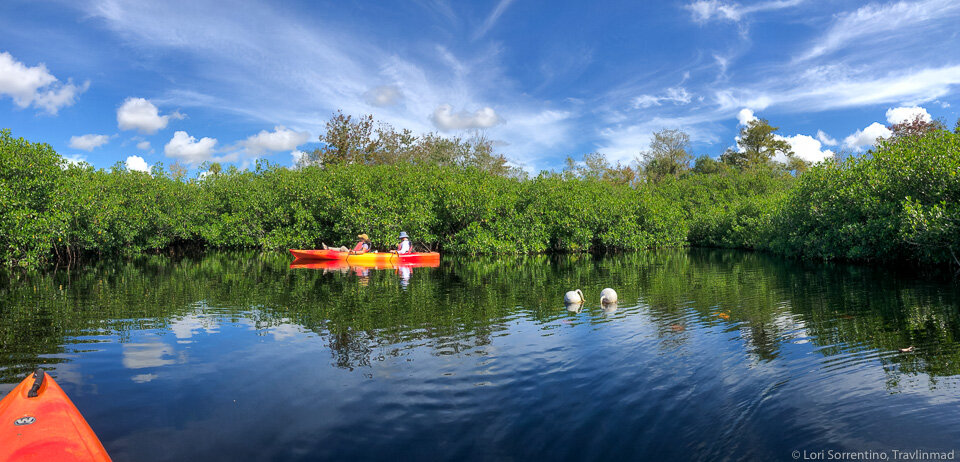
Kayaking on Turner River in Big Cypress Preserve
Did you know that coffee grows wild in Florida? It’s much smaller than a traditional coffee plant, but nonetheless interesting to see under the mangroves. Fun fact about Don: he was Captain of Diana Nyad’s kayak team when she swam from Cuba to Florida in 2013.
“The miracle of the light pours over the green and brown expanse of saw grass and of water, shining and slow-moving below, the grass and water that is the meaning and the central fact of the Everglades of Florida. It is a river of grass.””
— Marjorie Stoneman Douglas
We put in at the upper end of the Turner River in Big Cypress Swamp National Preserve just off highway 41 near the turn-off to Everglades City, and what started out as a pretty noisy tour quickly faded into quiet once we sat wayyyyy back in our kayaks and glided under the concrete bridge just inches from our nose. It felt oddly like snorkeling usually feels to me — after the first 15 minutes I realize the world is fading away and I finally…exhale a bit, taking in the peace and solitude.
And a rhythm sets in.
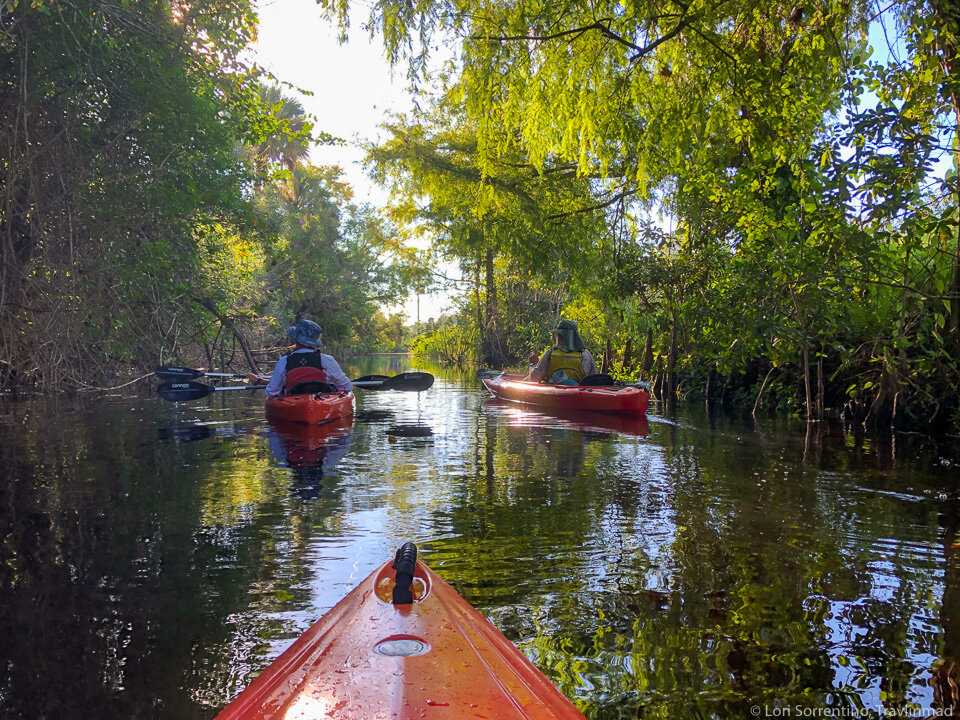





The mangroves and tunnels are refuges for herons, egrets, ducks, wood storks, spoonbills, alligators, otters and a host of native fish and amphibians. Although we didn’t see any gators that day, we did hear one splash into the water nearby. Just days after our tour, Don posted a video on Facebook of his tour that day who witnessed firsthand the mating roar of a male alligator — I think I would have toppled out of my kayak!
We were two of just 5 people on the tour, including Don, so it was easy to keep our distance without going out of our way. He gave us all the choice to paddle our own kayak or tandem, which is what we chose so I could snap some pics on my iPhone. Overall, the tour lasted 3 1/2 hours, and we were thankful for the extra half-hour and also to avoid a 3 hour tour… (sing it with me now) a three hour tour. Overall, we can’t recommend this tour enough for a relaxing (or thrilling, depending on what you see) Everglades tour!
If You Go
Take the Mangrove Tunnels Kayak tour with Everglades Area Tours. The tour is generally on the upper end of the Turner River in Big Cypress Swamp National Preserve or within Fakahatchee Strand Preserve State Park.
Kayaks were 13’ Wilderness kayaks — super comfortable, even for those with back issues.
What to Bring
Water shoes that you don’t mind getting wet from launching and unloading
Weather appropriate clothing
Water to hydrate — the sun on the water is hot any time of year
Snacks
Sunscreen
Insect repellent is a good idea
Cash for gratuity
4. Naples Botanical Garden
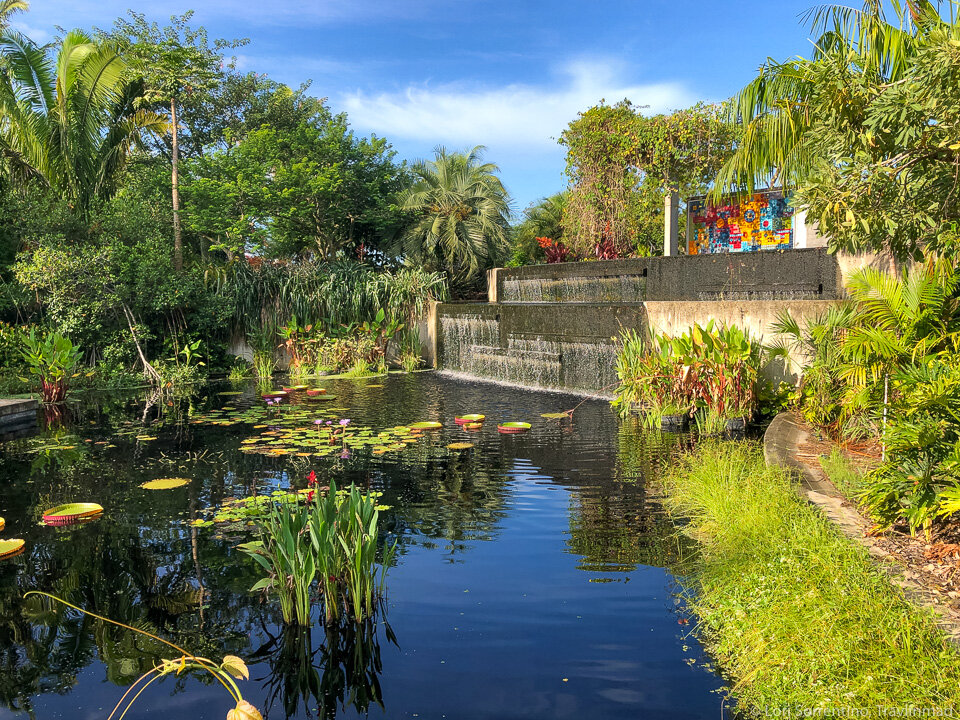
Founded in 1993, the 170-acre Naples Botanical Garden is a beautiful place to spend a couple of hours in a safe and tropical environment with plenty of room to wander freely from area to area.
This is the one place in Naples to see the native species of SWFL, and also indigenous plants of the tropics and subtropics including Brazil, the Caribbean, and Southeast Asia. To help visitor’s out, all the major plants are labeled with both common and scientific names.
From the lady at the entry to another who loaned us a pen and actually followed us to give the answer to a question that we had asked, the staff was all very considerate and friendly. How nice is that?
The trails are well-marked throughout the garden. Pick up a map of the garden at the ticket window or use your phone for the Audio Tour. Scannable QR codes will give you background and more information about all the different areas of the garden.
The walking trails within the main garden area are an easy walk, or you can hike the trail that wraps all the way around Lake Tupke, West Lake, and Deep Lake.
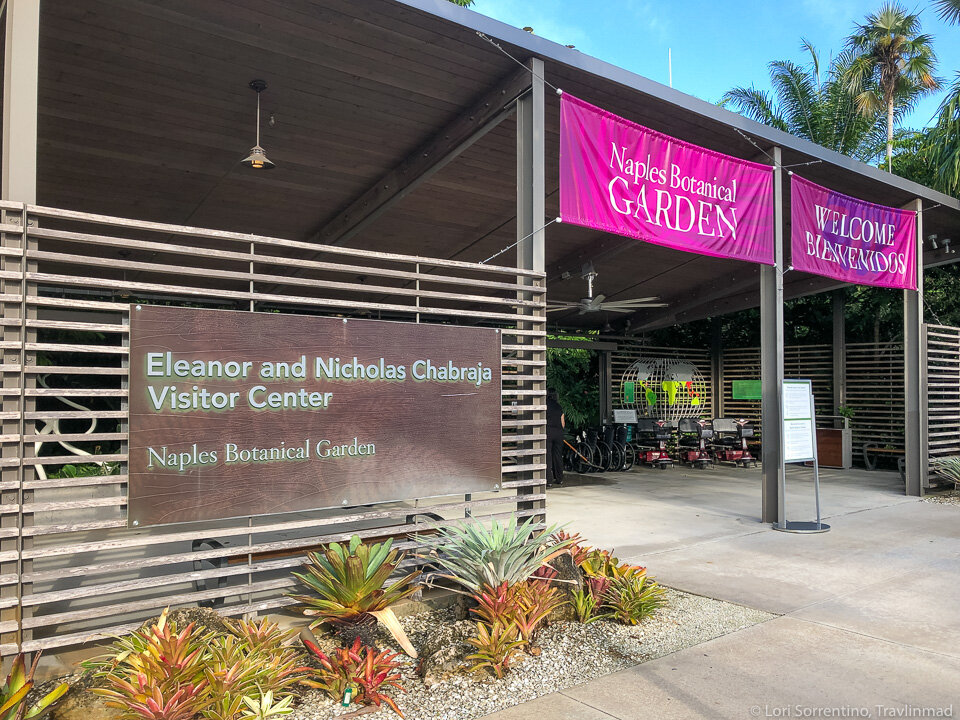



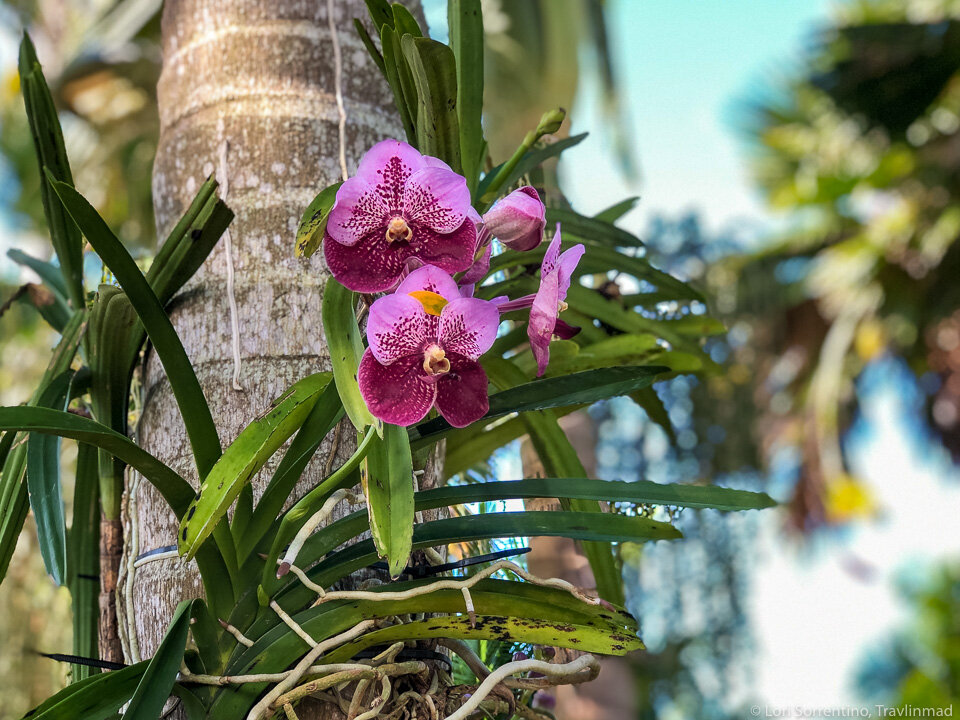
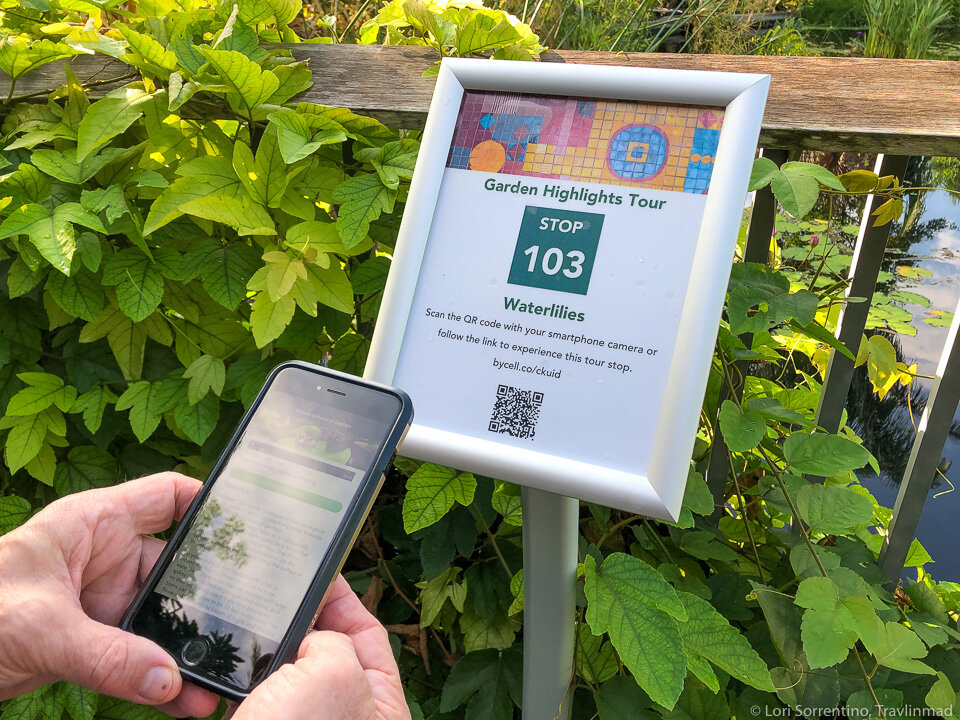



Along the way there’s a short side trail that leads to the Birding Tower — don’t forget your binoculars!
There’s a hands-on interactive Children’s Garden, but for the time being it’s not open. Normally, children can walk through the upper and lower levels checking out flowers, vegetables, and butterflies. Along the way kids are encouraged to draw whatever they like on the sidewalk with colorful chalks.
The individual gardens are set-up according to the ecosystems in different geographic locations. All individual gardens are marked accordingly, e.g., the Brazilian Garden, Caribbean Garden, the Succulent Garden, the Water Garden, and our favorite, the Asian Garden with stone sculptures and a teak pavilion handcrafted by tradesmen from Bali, so peaceful. In the Water Park, spend some time with blooming water lilies then walk to the top of the waterfall for a panoramic view of the garden.
Throughout the Garden are huge modernistic sculptures that tastefully blend-in with their surroundings and don’t detract from the plants and trees. At this time of year, water lilies are in bloom as are colorful orchids. there will be much more with the changing of the seasons. Relax and have something to eat and drink at the Fogg Cafe. The cafe has a full menu and even beer. Insect repellent would have been a good idea and we are looking forward to visiting the Christmas display.
If You Go
Naples Botanical Garden, 4820 Bayshore Dr Naples, FL
Don’t Miss the Paul Arsenault exhibition in Kapnick Hall which celebrates Arsenault’s love and passion for Naples Botanical Garden and the natural world. Arsenault’s work pays homage to the rich tradition of painting en plein air—or painting outdoors. Many of the world’s most celebrated artists such as Monet, Renoir, and van Gogh famously painted using this method to capture the fleeting effects of light on land, water, and clouds. Arsenault has also called Naples home since 1974 and can often be found quietly painting among the ever-changing landscapes of Naples Botanical Garden. His vibrant color palette and recognizable style capture the changing scenes and seasons so beautifully.
What to Bring
Wear comfortable shoes for walking
Bug spray would have been a good idea
Camera and binoculars
5. Paradise Coast Beaches
If you’ve never been to southwest Florida or the Paradise Coast before, it’s hard to imagine how lovely the beaches really are — from the beaches of Sanibel Island to the Ten Thousand Islands, the sand is soft and white, and the shells roll in like little gifts from the sea.
As a Jersey Girl having grown up going in the wild but always murky Atlantic Ocean, I love being able to see my feet in the water here — clear to the bottom on most days.
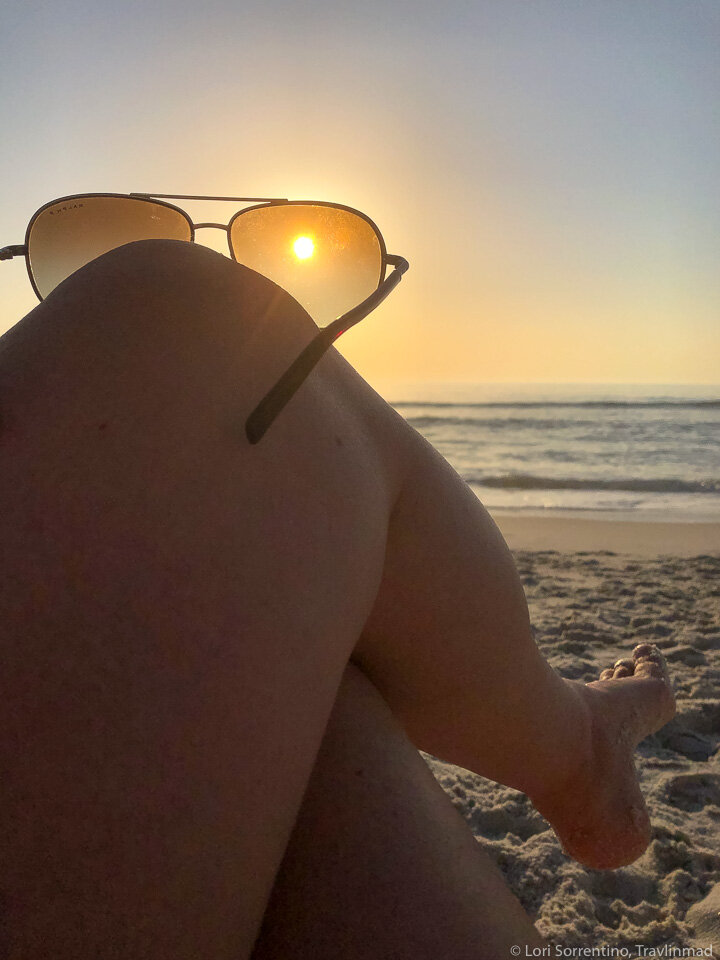

Perhaps the best thing about so many of the beaches along the Paradise Coast is that they are still relatively uncrowded. Sure there are beaches like the Naples Pier Beach and Lowdermilk Park that are favorites for family gatherings that draw heavy crowds during the season. But head to some of the lesser known beaches for a beach day or holiday that’s free from crowds and easy to stay a safe distance.
Delnor Wiggins State Park, Naples
11135 Gulf Shore Dr, Naples, FL
The only State Park in Naples, the beaches at Delnor Wiggins are pristine and perfect for sunbathing, swimming, picnicking, and fishing (at the northern end of the Park only). The entrance fee of $8 per vehicle is also a deterrent for some who prefer their beaches absolutely free, which only adds to the solitude you’ll find here. You’ll find natural dunes, hiking paths meandering through the low scrub, the occasional gopher tortoise trucking by, and a quiet place to experience Naples Florida beaches at their best.
Tigertail Beach, Marco Island
430 Hernando Drive, Marco Island, FL
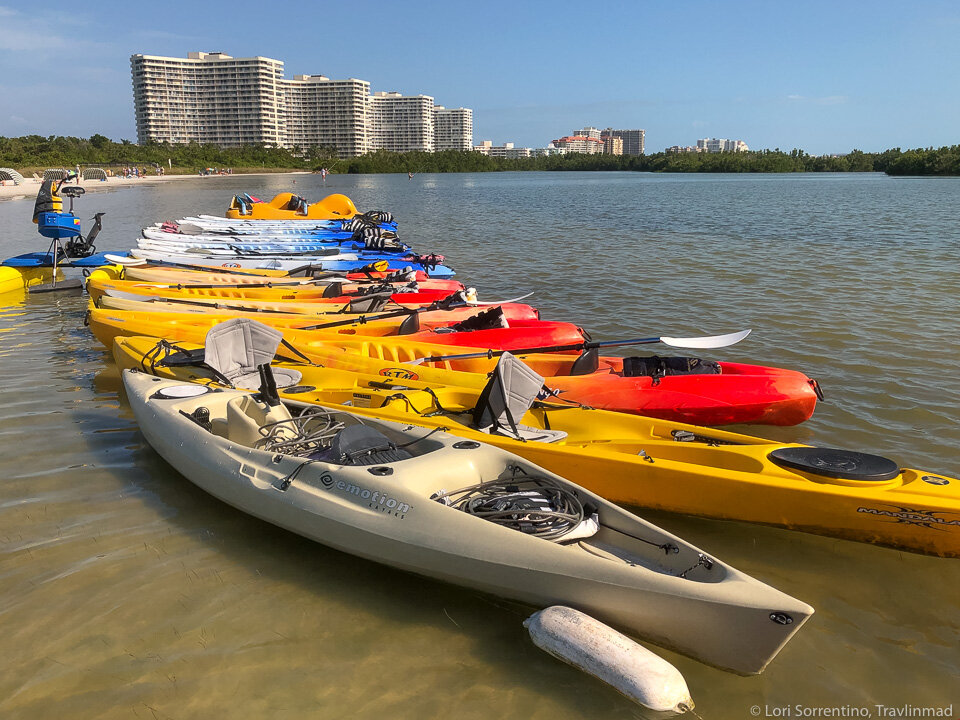
Looking to socially-distance on the beach but with a twist? Tigertail Beach on Marco Island is one of the unique beach experiences on the Paradise Coast with a variety of scenic views, activities, and even beach experiences.
The beach entrance at Tigertail brings you to the sandy inlet before you actually reach the white sand Gulf beach. If you’re looking for a secluded day at the beach, this is it.
We’ve never seen more than 15 people sunbathing at one time on this part of the beach, ever. You will see people trudging into the water however, on their way to somewhere else — beach chairs and coolers held high overhead to keep them dry.
They’re headed to the outer Gulf beach, where you’ll arrive after a short hike through scrub along a sandy trail. You may not like the walk through the water to get there — it’s about 30 years across and the water can get 3-4 feet high during high tide — but we think that’s all part of the fun!

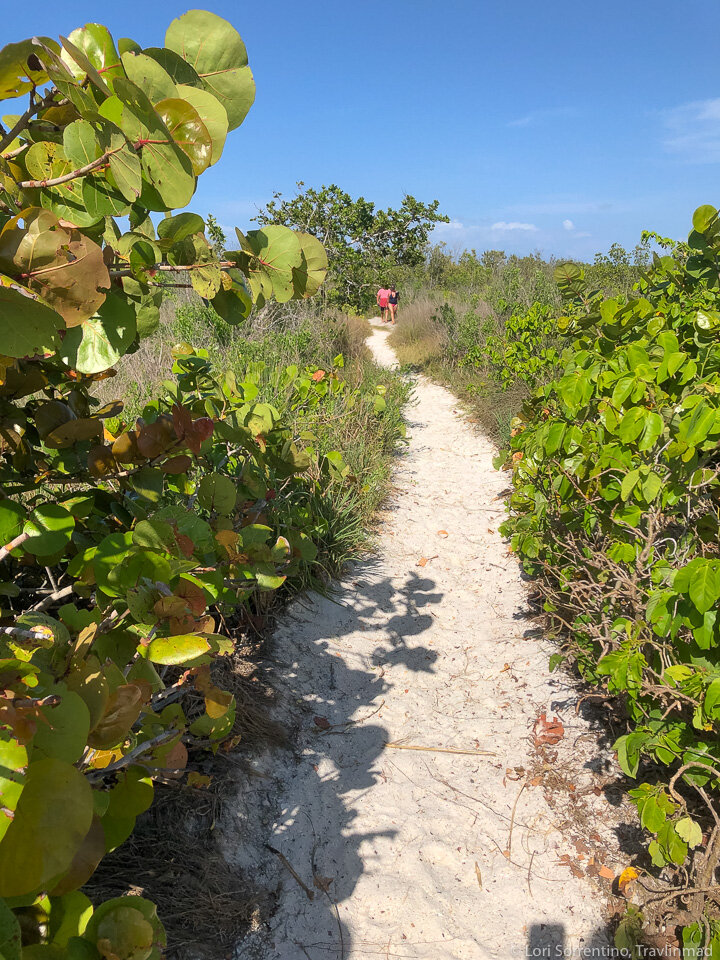

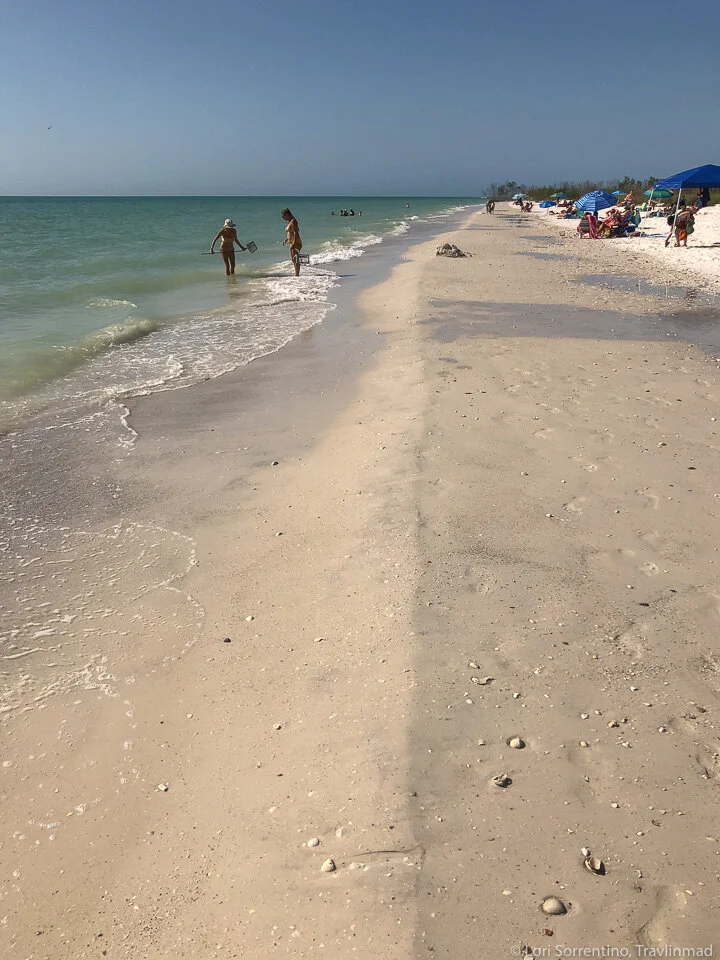
We were guests of the Paradise Coast on these tours, but as always — all opinions, photos, and stories are own own based on our first-hand experience.
Getting to the Paradise Coast
Located just two hours from Miami, four hours from Orlando and three hours from Tampa, the Paradise Coast is easily accessible from some of Florida’s largest cities. Travelers outside of the Sunshine State can fly into Southwest Florida International Airport (RSW) in Ft. Myers, which provides nonstop service to 46 destinations on 9 different air carriers.
Traveling During the Pandemic
If you’re local to southwest Florida, these places are perfect for a tropical staycation. If you need to fly to get here, please take precautions, use your best judgement, and follow the CDC safety guidelines:
Please wear a mask! It’s just common sense and respectful of your fellow travelers.
Flights into RSW Airport are running at near full capacity, and attendants are doing their best to keep passengers distanced as much as possible. Airlines are being diligent with temperature checks and requiring masks to be worn throughout the flight.
Wash your hands throughout your travels and carry extra hand sanitizer. The TSA is currently allowing more than the standard 3.4 oz requirements, but check the latest details on their website.
“Lori Sorrentino is the Editor and Photographer for Travlinmad, a food and travel blog specializing in slow travel and local food experiences. She caught the photography bug as a kid, and started traveling soon thereafter, a combination that eventually led to a career in tourism and destination marketing. She hails from New Jersey but now calls Florida home, and she travels full-time making local connections, discovering new food experiences, and photographing the colors, details and textures wherever she goes.”








